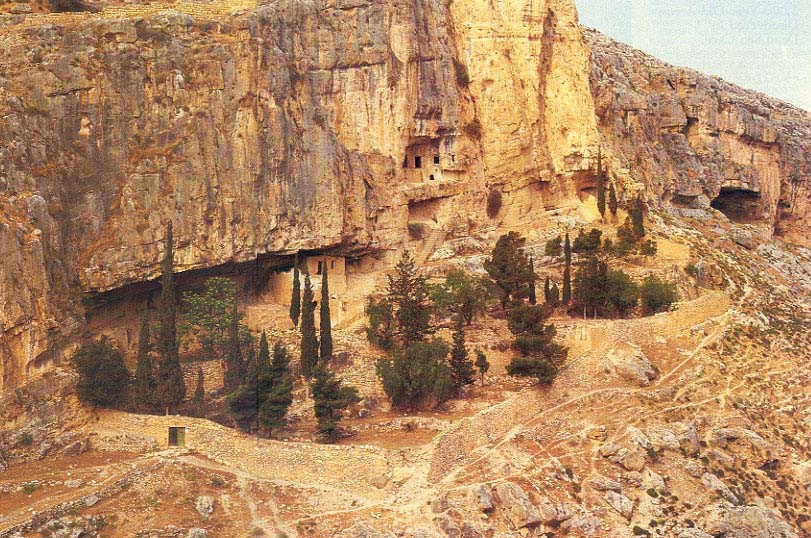Image Details

Joseph Patrich
Near the center of the photo, five “windows” recessed into the cliff face mark the site of the largest cave in Wadi Fara. A long flight of steps below the “windows” leads to this cave. According to author Patrich, this cave may have served as military headquarters for one of the most famous of the Jewish rebels, Simon bar [son of] Giora.
Simon conquered Idumea and Hebron, and even set his sights on Jerusalem. To further his plans, Simon took over the caves of Wadi Fara—to store food and booty and to garrison and train some of his troops, numbering about 15,000. Perhaps the officers of Simon’s army and their families were allotted the “luxury” accommodations of the many caves in the Wadi Fara cliffs. In the third year of the First Jewish Revolt against Rome (69 C.E.), Simon gained control of Jerusalem and was proclaimed its governor.
